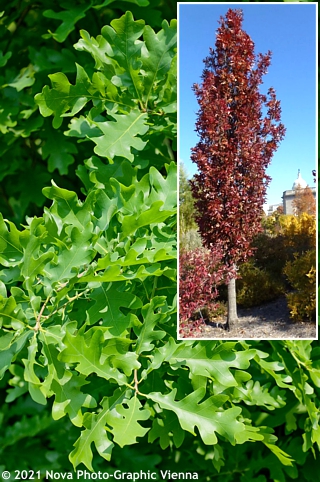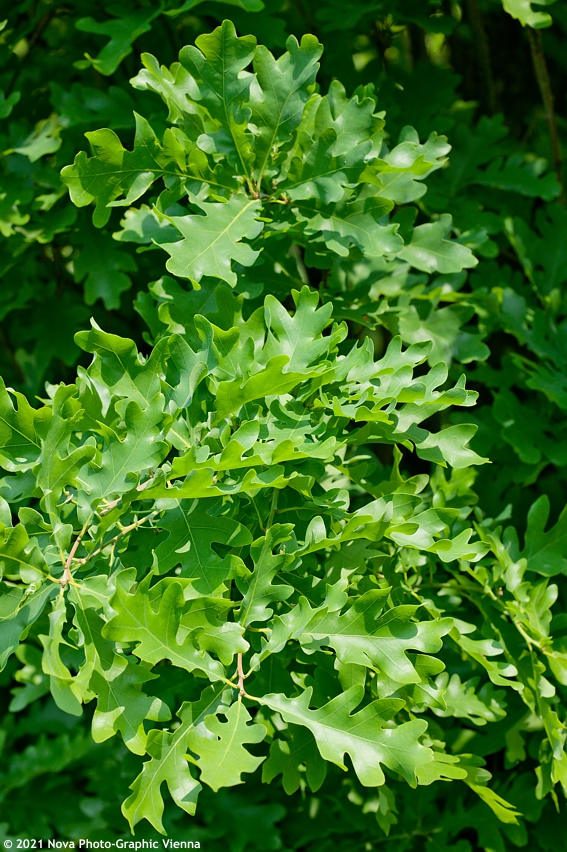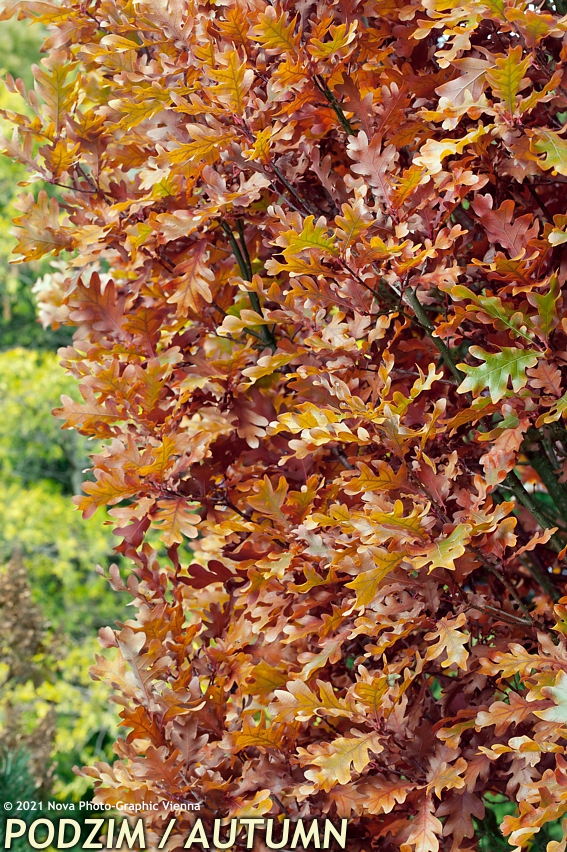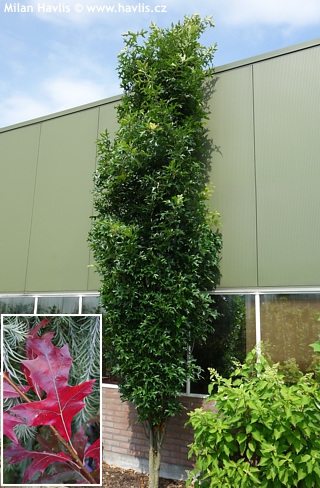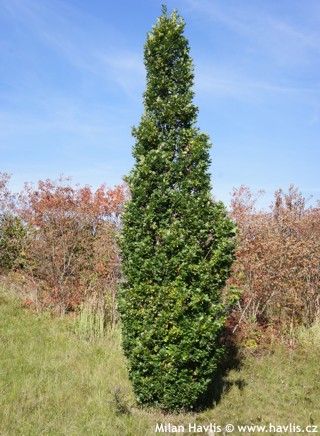Quercus x bimundorum 'Crimschmidt' CRIMSON SPIRE™ Two Words Oak
size/type
medium-sized tree,medium-sized tree
usual height
8-12m
usual width
2-4m
leaves
deciduous broadleaf
colour of leaves
location
full sun
soil type
acidic (peaty) to neutral
soil moisture requirements
evenly moist (dislikes drought)
USDA zone (lowest)
4 (down to -34°C)
winter protection
for zone 5+6

for zone 7

categorized
Quercus
Oaks are common trees of our natural woodlands. They border our ponds, occur naturally in our mixed forests, and make magnificent specimen trees in our parks and arboretums where less common species or rare varieties can be seen. Two Worlds oak is a natural hybrid, first described by E. J. Palmer from the J. Arnold Arboretum in Harvard, USA, of as early as 1948. It manifests the typical oak feature: to interbreed spontaneously and willingly. This time the parents were q. robur from the Old World (Europe) and q. alba from the New World (North America), hence its Latin name bimundorum = from two worlds (bi + mundus).CRIMSON SPIRE™ is a variety found by grower Willet N. Wandell in his nursery in Oquawka, Illinois, USA, around 1990 as a spontaneous seedling among other saplings of q. robus. These came from acorns collected in a locality with abundant white oak, and the new plant showed genetic information of both species, so it was clear that it was q. x bimundorum. It was patented in 1995 as PP9103 and introduced a year earlier by J. Frank Schmidt Nursery from Oregon, USA.
Description of the plant:
Looking at the CRIMSON SPIRE™ oak either from a distance or up close, it must be clear to anyone why it became a smash immediately after its launch in 1994 and remains popular still today. It forms a narrowly columnar tree, densely branched from the ground, with beautifully shaped leaves which in autumn offer magnificent colors. They are deciduous, 9-18 cm long, 4-10 cm wide, lobed at margins, partly glossy, and medium green from spring till late summer. In autumn, they turn vivid scarlet and crimson before they turn brown and remain on the tree for a long time. They can boast another advantage valued especially now that the disease is omnipresent: they do not suffer from powdery mildew. In late summer mature small, elongated acorns.
It grows upright, moderately to fast (about 30-50 cm per year), into a well-behaved, dense, columnar tree with a conspicuous top. The height varies between 8-12 meters and the width between 2-4 meters. It will be a respectable specimen tree in any garden, including those with limited space, which it will light up with its bright foliage colour in autumn.
Two worlds oak is not picky about soil type, but prefers deep, moderately fertile, acidic soil that enhances autumn color of the leaves. It thrives in moist soils and can also cope with heavy and clay soils and temporary waterlogging once established. It responds to drought by the absence of color change of leaves in autumn and generally thinner foliage. It likes sunny locations and does not mind exposed positions – it does not suffer from turning branches in the direction of the wind which might spoil the shape of the crown. Pruning is possible in late winter. Hardy to min. -34 °C (USDA zone 4).
Last update 07-11-2021
QUICK PRICE OVERVIEW
CURRENTLY SOLD OUT
WANT TO TRY A SIMILAR PLANT?












